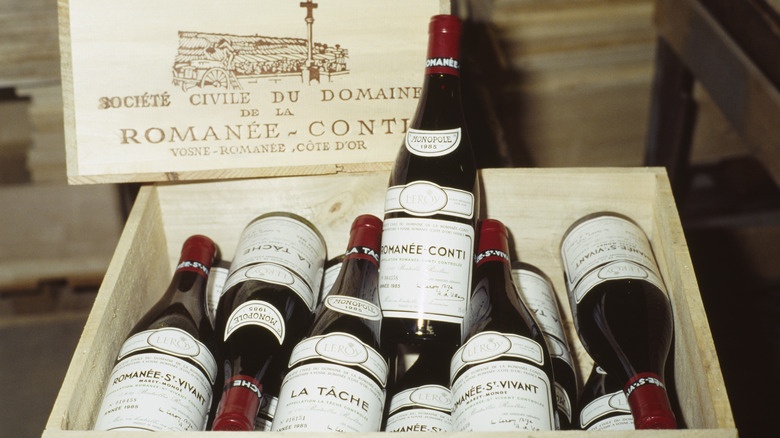How Many Bottles Are In A Case Of Wine?
Whether you're planning a party, stocking up on your favorite vintage, or simply taking advantage of a great deal, there are plenty of reasons you might find yourself seeking a whole case of wine. However, when it comes to defining how many bottles make up a case, the answer isn't as clear-cut as you might think.
Officially, a case of wine contains 12 bottles. Wine in the United States is typically labeled using the metric system, and each of those bottles contains 750 milliliters of wine. That brings the total case size to a healthy 9 liters. In imperial measurements, that works out to a little over 25 fluid ounces per bottle, and just over 300 fluid ounces for the whole case.
However, unless you're buying a case of wine in person, it's worth double-checking the case size. Nowadays, it's increasingly common to find cases that only contain six bottles. You may even find cases of wine that contain just three. Selling more compact cases makes it easier for wine producers to sell their products to smaller retailers who may have limited storage space. It's also an appealing option for the general public who are more likely to require lower quantities of wine. Some countries have even enforced smaller case sizes to reduce the risk of injury to those who have to carry them. Essentially, the change is a modern adaptation to the industry, much like boxed wine and the adoption of screwtops in place of corks.
The size of a wine case probably comes from its portability
If winemakers are turning toward six-bottle cases, you're probably wondering why they didn't choose that size in the first place. The precise answer is something of a mystery, but it's likely tied to the history of the wine trade.
Wine has been around for an incredibly long time. The earliest evidence suggests winemaking began in the Eurasian nation of Georgia, dating back to around 6000 B.C. We also know about the popularity of wine among the ancient Greeks and Romans, and that it was a commonly traded commodity. Originally, wine was transported in clay pots — called amphorae — until the Romans transitioned to oak barrels around the 1st century. It wasn't until the 17th century that glass bottles became an option, and wine bottles as we know them weren't popularized until the 18th century.
By this time, wine was being transported all over the globe. As you can probably imagine, shipping glass bottles across the world is a delicate task. The bottles were packed into wooden crates but it was crucial that the crates could be stacked securely in the hold of a ship. Although some believe the number twelve was chosen for symbolic reasons, it's likely because three rows of four bottles fit in a crate that's easy to stack and store. Plus, twelve wine bottles combined weigh almost 35 pounds, and heavier crates would be more difficult for people to pick up and carry.

